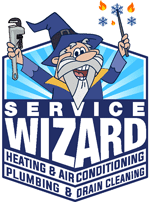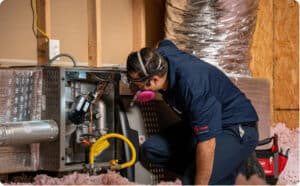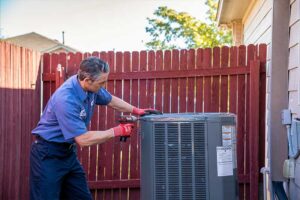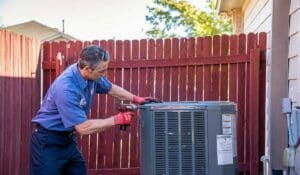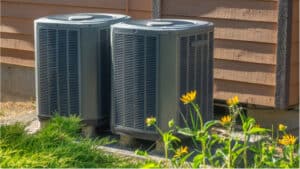Think of your home as a giant thermos, working tirelessly to keep the inside comfortable. Your home’s insulation is at the heart of this “thermos” concept. It’s the silent workhorse, tucked away in your attic, walls, and crawl spaces, diligently maintaining a consistent indoor temperature, warding off external elements, and preventing your energy bills from spiraling out of control. Yet, despite its critical role, insulation is often the forgotten component of home maintenance, rarely considered uintantil a problem becomes undeniable.
Many homeowners assume that once installed, insulation lasts indefinitely without any need for attention. This isn’t true. Over time, insulation can settle, shift, get damaged, or become compromised by unexpected invaders. A drafty room, a sudden spike in your electricity or gas bill, or worse, the tell-tale signs of pests or moisture, are often the first indicators that your insulation isn’t performing as it should. By then, a small issue could have escalated into a significant, costly problem. This is why regular insulation inspections are not just a good idea, but a fundamental part of responsible homeownership. Proactive checks can catch minor issues early, saving you money, time, and discomfort. Let’s delve into why making insulation inspections a consistent part of your home’s upkeep is absolutely essential.
The Unseen Benefits: Why Regular Insulation Inspections Are Non-Negotiable
1. Supercharge Energy Efficiency and Slash Utility Bills
This is arguably the most compelling reason to prioritize insulation inspections, especially with energy costs in the Philippines. Your home’s ability to resist heat transfer is directly proportional to your insulation’s effectiveness. In the sweltering heat we often experience in Calabarzon, strong insulation acts as a crucial shield, preventing external heat from seeping into your cool, air-conditioned spaces. Conversely, during cooler periods or when using a heater, it traps that warmth indoors, preventing its escape. When insulation degrades, gets compressed, or has gaps, its ability to resist heat flow (its R-value) plummets. This forces your heating, ventilation, and air conditioning (HVAC) system to work overtime, straining its components and leading to several costly consequences:
- Exploding Energy Bills: More energy consumption directly translates to significantly higher costs for heating and cooling your home. This is often the first and most alarming sign homeowners notice.
- Premature HVAC Wear and Tear: An overworked HVAC system runs longer and cycles more frequently. This accelerated operation puts immense stress on its parts, leading to more frequent breakdowns, expensive repairs, and a drastically shortened lifespan for what is often one of your home’s most expensive appliances.
- Inconsistent Indoor Temperatures: You might constantly adjust the thermostat, yet some rooms remain stubbornly hot while others are inexplicably cold. This indicates areas where insulation is failing, creating uncomfortable hot or cold spots and reducing overall home comfort.
Regular inspections ensure your insulation maintains its optimal R-value, directly impacting your finances and the consistent comfort of your living spaces.
2. Master Moisture Control and Prevent Destructive Mold Growth
Insulation is key in your home’s defense against moisture, a constant concern in our humid climate. When insulation becomes damp or wet, its thermal performance drops dramatically. More critically, damp insulation creates a perfect, dark, and often undisturbed environment for mold and mildew. This can occur due to:
- Stealthy Roof Leaks: Even minor, undetected roof leaks, perhaps after a strong typhoon, can slowly saturate attic insulation.
- Hidden Plumbing Leaks: Leaks from pipes within walls or ceilings, often unseen for long periods, can soak surrounding insulation and drywall.
- Excessive Indoor Humidity: Poor ventilation, especially in confined spaces like attics or crawl spaces, can lead to condensation forming on cold surfaces, which then drips onto or soaks into insulation.
Mold and mildew are not just unsightly; they actively degrade building materials, compromising your home’s structural integrity. Furthermore, mold can release microscopic spores into your indoor air, posing serious health risks, particularly for individuals with allergies or respiratory sensitivities. A musty smell often signals hidden mold. Regular insulation inspections are crucial for early detection of moisture intrusion, allowing for swift remediation and preventing extensive mold colonization that is costly and difficult to remove.
3. Fortify Against Pest Infestations and Mitigate Damage
Attics, crawl spaces, and wall cavities are natural havens for various unwelcome guests in a tropical environment. Rodents, insects, and even birds often find these insulated spaces warm, secluded, and ideal for nesting. Once inside, these pests wreak havoc:
- Direct Insulation Damage: Pests chew, burrow, and tunnel through insulation, compressing it and creating pathways. This physically damages the material, significantly reducing its R-value and creating gaps in your thermal envelope.
- Contamination and Odors: Pest droppings, urine, and nesting materials heavily contaminate insulation. This leads to persistent, unpleasant odors that can permeate your home, attract more pests, and pose health hazards.
- Expanded Entry Points: Small holes created by pests can be widened over time, creating larger entry points for more pests and further compromising your home’s sealed environment.
A routine inspection of your insulation can reveal tell-tale signs of pest activity – droppings, gnaw marks, nests, or unusual scratching noises. Early detection allows you to address infestations promptly, prevent further damage, and ensure proper cleanup and restoration of your insulation.
4. Elevate and Maintain Superior Indoor Air Quality
Your home’s insulation acts as a crucial barrier, not just for temperature but also for filtering the air that circulates within your living spaces. Well-sealed and intact insulation helps prevent outdoor pollutants, dust, pollen, and other airborne irritants from infiltrating your home. However, when insulation is compromised, it can paradoxically contribute to poor indoor air quality. For instance, insulation harboring mold growth will release spores into the air. Similarly, insulation contaminated by pest droppings or nesting materials can introduce bacteria, viruses, and allergens. A poorly insulated and unsealed home can also draw in dusty air from attics or crawl spaces. Regular inspections ensure that your insulation remains clean and intact, preventing it from becoming a source of harmful airborne contaminants and contributing to a healthier living environment for you and your family.
5. Protect Your Home’s Structural Integrity and Ensure Its Longevity
Beyond comfort and energy savings, insulation plays a critical role in preserving the very structure of your home. By regulating temperature and moisture, it protects wooden beams, drywall, electrical wiring, and other vital building materials from extreme conditions that can lead to premature deterioration. For example, uncontrolled moisture due to poor insulation or leaks can lead to wood rot, weakening your home’s framework. Similarly, significant temperature fluctuations can cause materials to expand and contract excessively, leading to cracks in walls, ceilings, and other structural stress. By ensuring your insulation is in excellent condition, you’re making a direct investment in the overall longevity, stability, and soundness of your entire home’s structure, preventing potentially very costly structural repairs down the line.
When and How to Conduct Your Insulation Inspections
Annual insulation inspections are ideal, especially in spring or fall when temperatures are mild. However, immediate inspections are crucial if you notice:
- Sudden energy bill increases: Unexplained jumps in heating or cooling costs.
- Drafts or uneven temperatures: Cold spots or drafts even with closed windows.
- Pest activity: Signs of rodents or large insect infestations.
- Visible water stains: Stains on ceilings or walls indicating leaks.
- After severe weather: Following heavy rains or strong winds, check for roof damage.
- Before buying/selling a home: Essential for pre-purchase inspections or adding value when selling.
- During renovations: A prime opportunity to assess and upgrade insulation.
While DIY checks can offer basic insights (look for damaged or missing insulation, pest signs), a professional insulation contractor is invaluable for a comprehensive assessment. They use specialized tools like thermal imaging cameras to find hidden issues, safely navigate difficult areas, and provide detailed recommendations.
The Indispensable Role of Professional Insulation Services
While a homeowner can conduct a preliminary visual inspection of easily accessible insulation, recognizing the limits of DIY is paramount. Professional insulation services offer a level of expertise and equipment that goes beyond what most homeowners possess. An expert insulation contractor can provide a comprehensive energy audit, pinpointing exact areas of heat loss or gain, identifying hidden moisture intrusion points, and accurately assessing insulation R-values. They are trained to safely navigate attics and crawl spaces, which can be hazardous due to dust, sharp objects, or structural issues, and can spot subtle signs of pest activity or mold growth that might be missed by an untrained eye. Moreover, professionals can recommend the most effective solutions, whether it’s adding insulation, air sealing, or addressing ventilation problems, ensuring that any work done is up to code and maximizes your home’s energy efficiency and comfort. Don’t hesitate to engage a professional for a detailed assessment, especially if you suspect underlying issues or are planning major home improvements.
